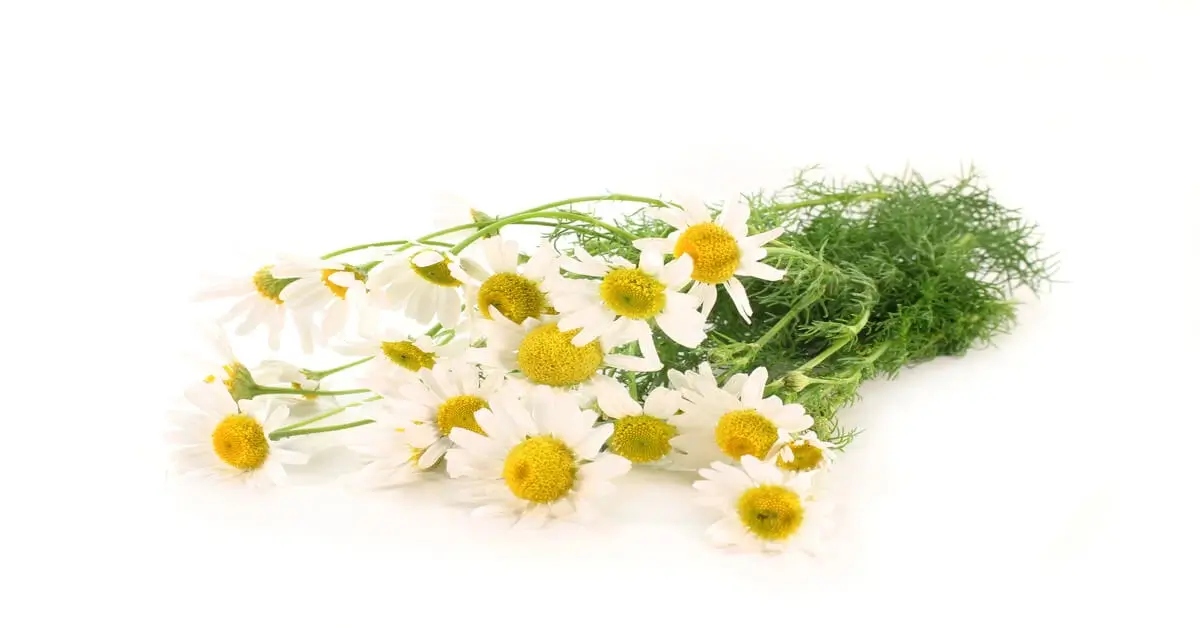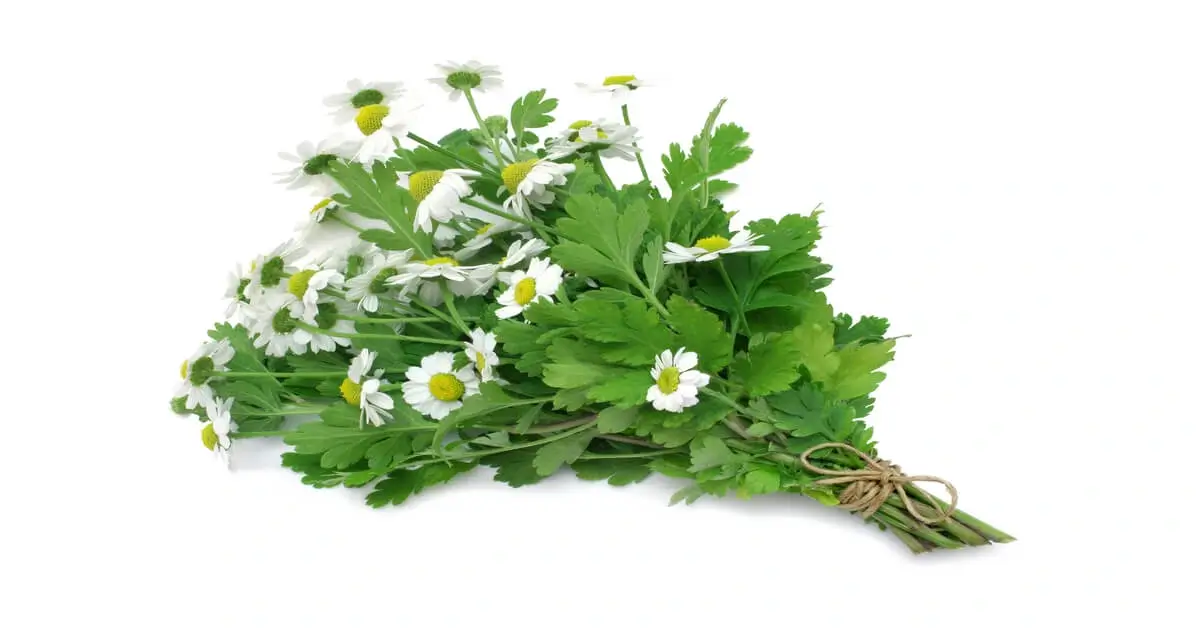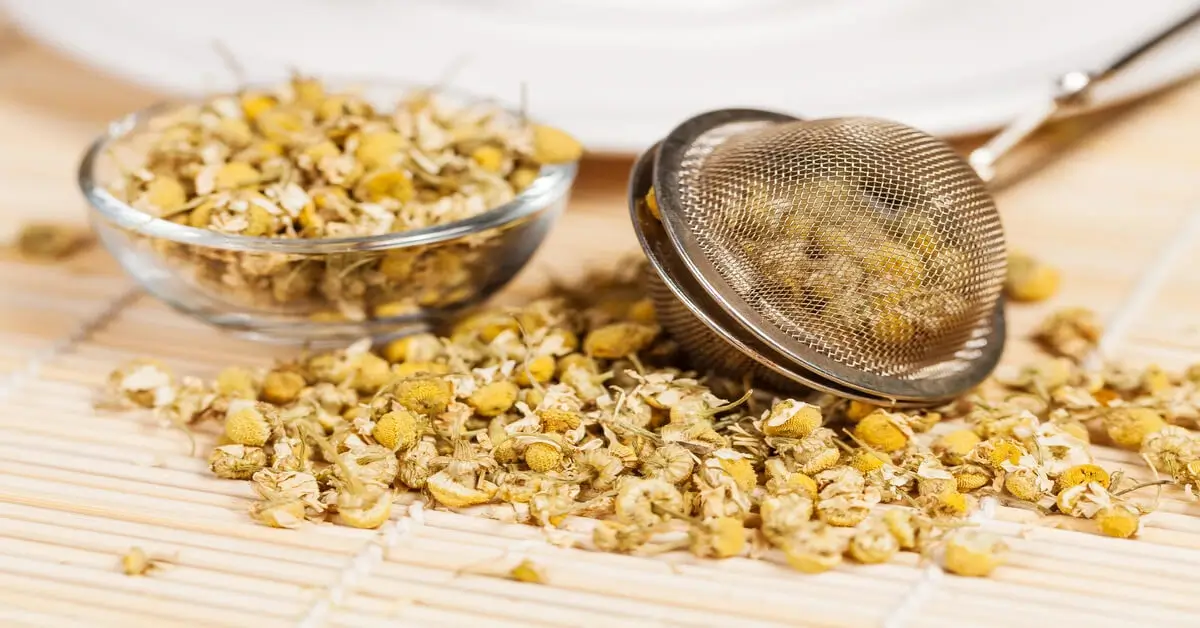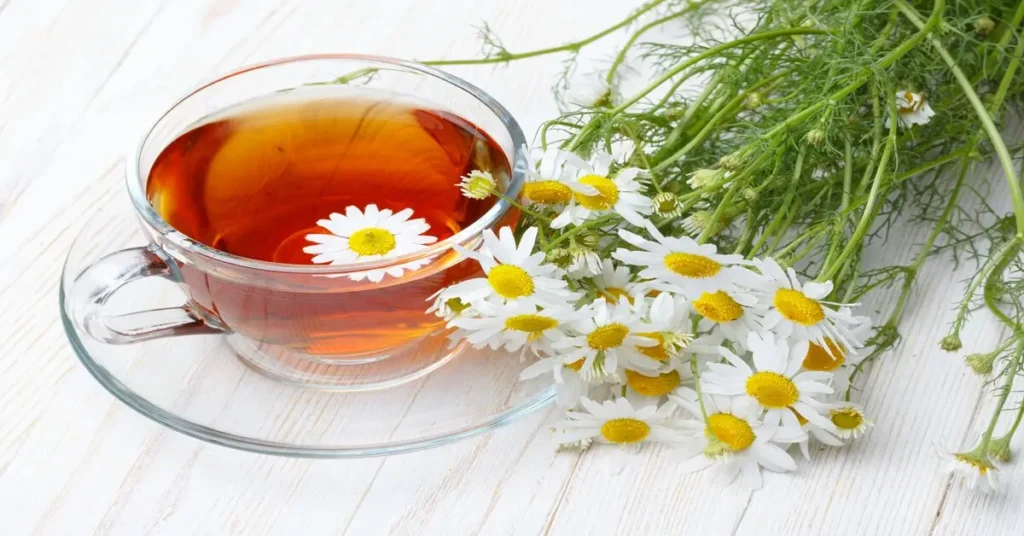In the herbal world, Chamomile and Feverfew hold esteemed places. Both belong to the Asteraceae family, widely known for their medicinal properties. While they share similarities, fundamental differences lie in appearance, usage, and cultivation. We aim to dissect these, assisting in telling them apart.
Chamomile: The Sleep-Aiding Bloom

Chamomile, primarily German Chamomile (Matricaria chamomilla), is a perennial plant cherished for its daisy-like flowers. The bloom period usually starts mid-summer. Its fragrance, similar to apple or citrus, attracts pollinators like bees. At the same time, gardeners admire its delicate white petals and yellowish centers.
Medicinal Properties of Chamomile
Famed as a sleep aid, Chamomile also boasts anti-inflammatory and pain-relieving properties. These healing qualities reside primarily in its flowers, making Chamomile flowers a popular herbalist’s pick. Chamomile flavoring is not just a bedtime tea staple but also finds its way into foods and beverages.
Growing Chamomile
Chamomile is a full-sun lover, thriving in USDA zones 3-9. Germination starts with seeding in late winter or early spring, post the last frost. Wild Chamomile, a common name for German Chamomile, indicates its easy-to-grow nature.
Feverfew: The Migraine Reliever

Feverfew (Tanacetum parthenium), often confused with Chamomile, boasts its distinct characteristics. Unlike Chamomile, Feverfew has yellowish-green leaves and more petite, flatter flowers. A sturdy perennial, Feverfew blossoms from late summer into fall, flaunting daisy-like, chrysanthemum-family blooms.
Feverfew’s Medicinal Properties
Renowned for migraine relief, Feverfew also treats inflammation and toothache. Its leaves contain a compound, Parthenolide, critical for its medicinal usage. While Feverfew leaves have been used for centuries, medical advice is necessary before using them internally due to possible side effects.
Cultivating Feverfew
Feverfew grows well in full sun to partial shade in USDA zones 5-9. Seeding or division of a mature plant can start a new Feverfew garden. Despite being more challenging to find than Chamomile, Feverfew seeds are available in health food stores.
Comparing Feverfew and Chamomile
Feverfew and Chamomile belong to the same botanical family and share the Asteraceae’s signature daisy-like appearance. They are hardy, perennial plants thriving in a variety of conditions. Each brings a unique floral presence to the garden, attractive to the human eye and insects alike.
Usage: Feverfew vs Chamomile

While both herbs are medicinally beneficial, their usage differs. Chamomile is a soothing sleep aid, useful for minor aches, and used in beverages for its sweet, apple-like flavor. Feverfew, in contrast, is a powerful migraine and inflammation combatant.
Flavor and Aroma
Chamomile’s aroma is sweet and reminiscent of apples or citrus. Its flavor is equally pleasant, making it a common tea ingredient. On the other hand, Feverfew has a bitter taste and a strong, slightly unpleasant smell, limiting its use in culinary applications.
Growth and Availability
Both plants thrive in full sun, with Chamomile also tolerating partial shade. Chamomile is a prolific self-seeder, sometimes considered a garden runner. Feverfew is less invasive. Chamomile is widely available in most grocery stores. At the same time, Feverfew may need a trip to a health food store or specialist nursery.
Conclusion
Choosing between Feverfew and Chamomile depends on personal needs. If you seek a relaxing herbal tea or sleep aid, Chamomile is the winner. However, for powerful relief from migraines and inflammation, consider growing Feverfew.
Their hardiness and attractive blooms are valuable additions to any garden, promoting biodiversity and offering a range of medicinal benefits.

